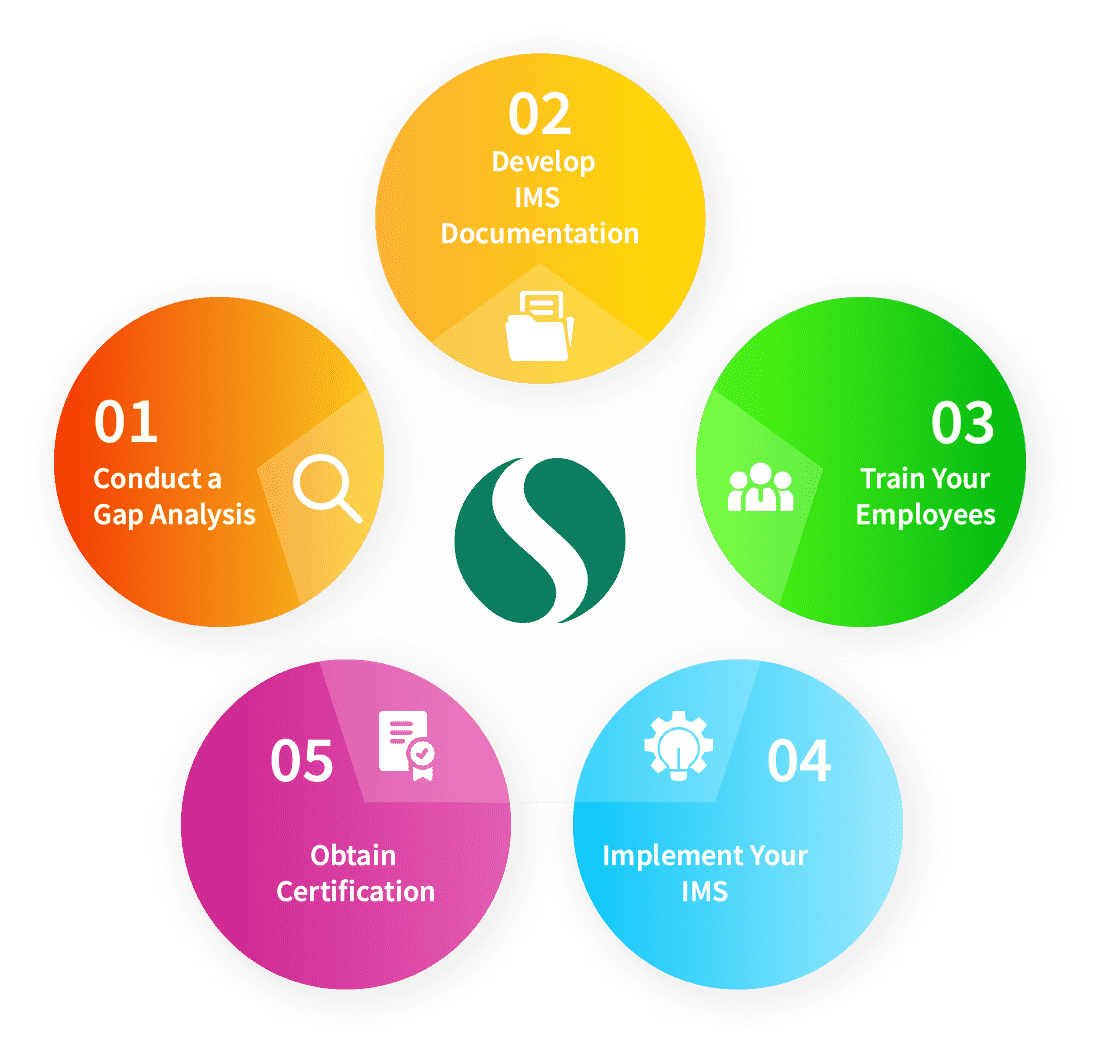Why You Need an Integrated Management System
An Integrated Management System (IMS) is a framework that allows an organization to manage its environment, health and safety, and quality objectives in a cohesive manner. The IMS approach can help streamline an organization’s operations, improve communication and collaboration between departments, and make it easier to meet regulatory requirements.
The benefits of implementing an IMS are numerous, but the process can be daunting. In this blog post, we’ll break down the steps you need to take to implement an IMS in your organization, from conducting a gap analysis to obtaining certification.
Step 1: Conduct a Gap Analysis
The first step in any IMS implementation is to conduct a gap analysis. This will help you understand where your organization’s current management system falls short of the requirements of the ISO standards. A gap analysis will also identify any processes or procedures that need to be put in place in order to comply with the standards.
Step 2: Develop Your IMS Documentation
Once you’ve identified the gaps in your management system, it’s time to start developing the documentation that will form the basis of your IMS. This includes creating or updating your organization’s quality manual, developing standard operating procedures (SOPs), and creating forms and templates for use by employees.
Step 3: Train Your Employees
Employee buy-in is essential for a successful IMS implementation. Make sure all employees understand what the IMS is and why it’s being implemented. Explain how the IMS will affect their day-to-day work and how they can contribute to its success. Provide training on any new SOPs or forms that will be used as part of the IMS.
Step 4: Implement Your IMS
Now that your documentation is complete and your employees are trained, it’s time to start implementing your IMS. This includes putting all new procedures into action and monitoring compliance with the ISO standards. Regular audits will help you identify any areas where improvements need to be made.
Step 5: Obtain Certification
Once you’ve successfully implemented your IMS, you can apply for certification from a reputable certification body. This will show potential customers that your organization is committed to continual improvement and meeting international standards.
Implementing an Integrated Management System (IMS) can bring numerous benefits to your organization, from streamlining operations to improving communication between departments. But before you can reap those benefits, you need to put in the hard work of conducting a gap analysis, developing documentation, training employees, and implementing the system throughout your organization. With careful planning and execution, you can obtain certification and show potential customers that your organization is committed to meeting international standards.

